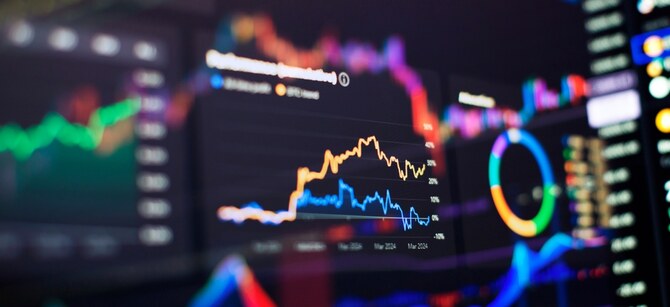
19 Oct 2024
RIYADH: A smattering of Arab markets saw positive growth in September, despite an overall decline for the region, according to the latest monthly bulletin released by the Arab Monetary Fund.
The Damascus Stock Exchange led the way with a 55.36 percent increase in trading volume, while the Muscat Stock Exchange followed closely, recording a rise of 54.67 percent.
Abu Dhabi also demonstrated strong performance, with a 37.28 percent surge in trading value, reflecting investor optimism and sustained economic activity.
Although some exchanges faced challenges, the overall market resilience in the Arab region contrasts sharply with the struggles seen in Western markets, according to the AMF.
In its 51st edition of the report on Arab Financial Markets, the organization provided a comprehensive analysis of these trends, offering detailed insights into trading volumes and values across the region’s stock exchanges.
The report showed that Arab markets overall saw a 10.78 percent drop in trading volume and a 2.76 percent decline in trading value compared to the previous month.
Saudi Arabia’s financial market saw a 12.42 percent decline in trading volume, with Dubai and Egypt also experiencing decreases of 7.31 percent and 4.36 percent, respectively.
The report suggested that these fluctuations were influenced by a mix of regional market sentiment, sector-specific performance, and global economic concerns.
The AMF’s bulletin provided a thorough overview of the financial landscape across the 16 Arab markets, highlighting a complex interplay of growth, stability, and decline, driven by both regional dynamics and broader international pressures.
Performance of the AMF Composite Index
One of the key highlights of the report is the performance of the AMF’s composite index, which measures the overall activity of Arab financial markets.
For September, this indicator rose by 0.58 percent, settling at 496.70 points. This represents a slight improvement from August, indicating a mild but steady recovery across Arab exchanges.
This increase corresponds to a gain of 2.87 points by the end of August.
Notably, 10 of the 14 Arab stock markets included in the index contributed positively to the overall growth, reflecting a diverse but generally favorable movement in market performance.
However, four exchanges recorded declines, reflecting the challenges some markets faced amid ongoing economic adjustments.
Leading performers: Iraq and Damascus take the lead
In terms of individual market performance, the Iraq Stock Exchange emerged as the standout performer in September, with its index surging by 8.26 percent.
This significant growth was followed closely by the Damascus Stock Exchange, which posted a 6.57 percent increase.
These strong gains highlight a continued upward trajectory in certain segments of the Arab financial markets, driven by positive market sentiment and regional economic developments.
Other Arab bourses also showed positive momentum, though to a lesser degree. Dubai’s Financial Market climbed by 4.12 percent, and Qatar’s Exchange rose 4.03 percent, both marking solid gains.
These performances were supported by the continued growth of sectors such as real estate, finance, and consumer goods.
The Saudi financial market, although not as dynamic as some of its peers, still recorded a 0.67 percent rise, indicating stability as the exchange continues to adjust to broader regional and global changes.